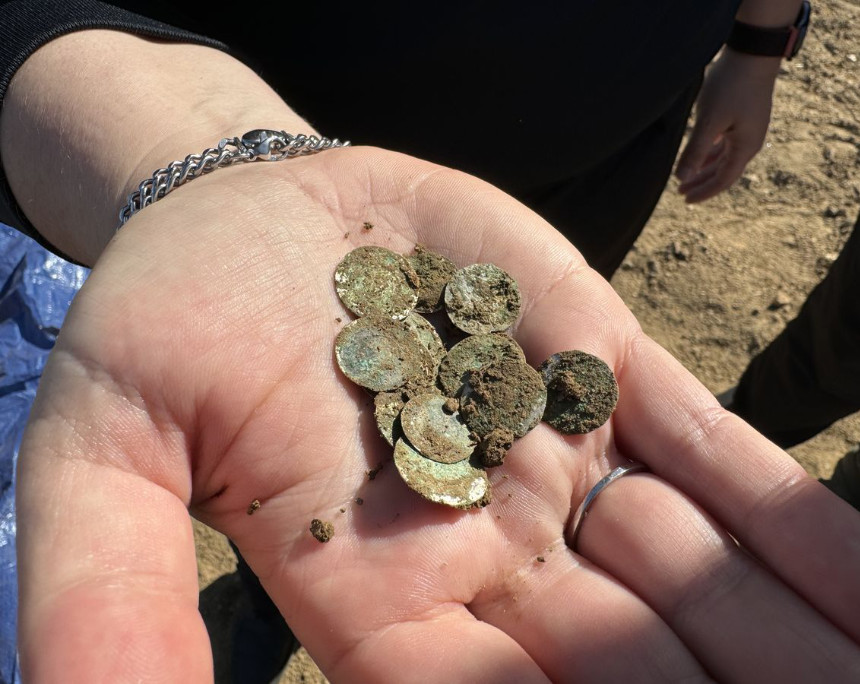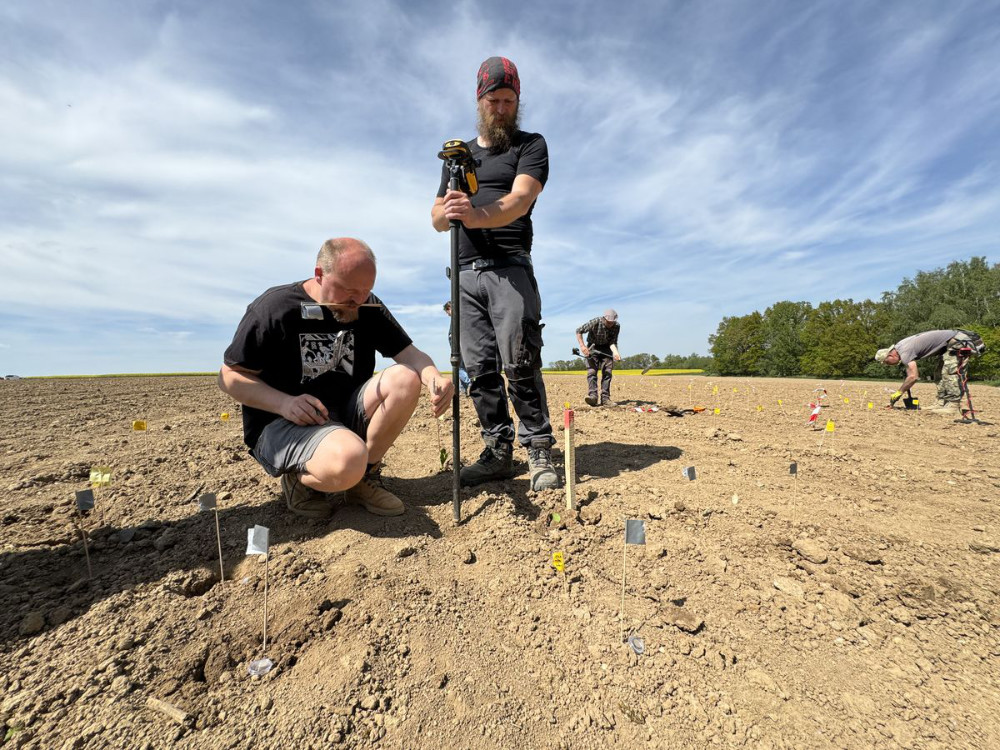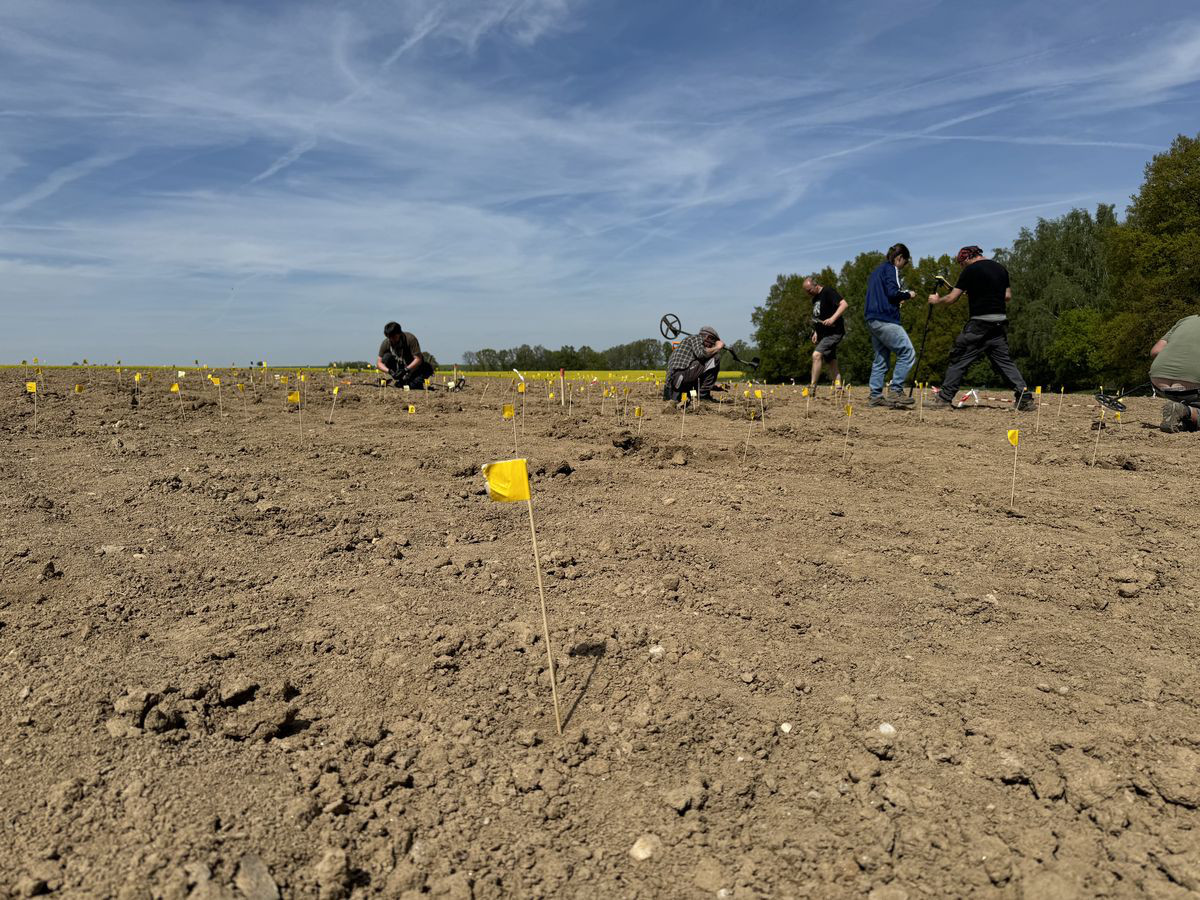More Than 2,000 Medieval Denarii Discovered in Czechia
During a period of political instability in the Bohemian states, an unknown person hid a large number of coins near the present-day town of Kutná Hora. It took 900 years for the treasure to be unearthed: a woman out for a walk found some coins on a freshly ploughed field and immediately contacted the authorities.
Content
What she found is described by experts as one of the country’s most important coin hoards of the last 10 years. It certainly is the largest coin find from the time around 1100 A.D. to have ever been discovered in this region. It contains more than 2,150 coins. So far, issues of three Přemyslid rulers have been identified: King Vratislaus II as well as Princes Bretislaus II and Bořivoj II (ca. 1085–1107).
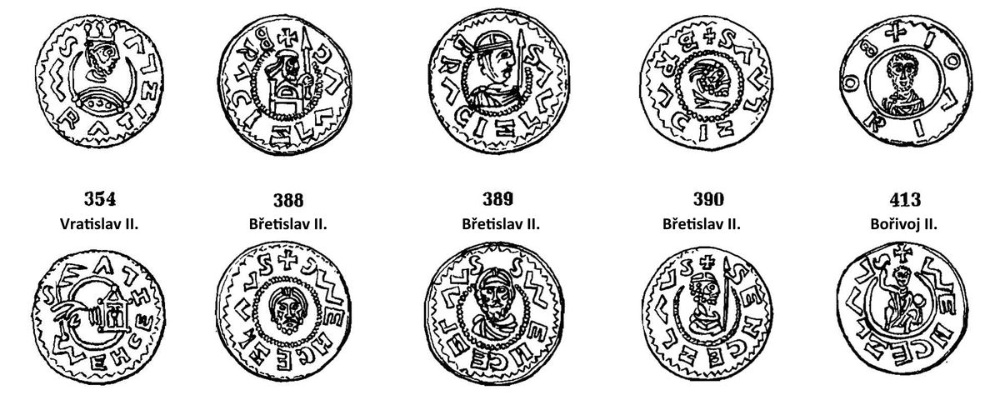
Illustrations of Czech coins from the period of the hoard, from a book by František Cach. Photo: Institute of Archaeology of the Czech Academy of Sciences in Prague.
“It is very likely that the coins were produced in the Prague mint from silver that was imported into Bohemia at the time,” says Lenka Mazačová, Director of the Czech Museum of Silver in Kutná Hora. The denarii were made from a coin alloy that, in addition to silver and copper, also contains lead and traces of other metals. Identifying the exact composition of the alloy can help trace the origin of the silver.
Times of War
The experts praised the finder for quickly informing the authorities. Her prompt actions enabled the archaeologists to immediately start their work. The coins, which were scattered across the field, were located with metal detectors and carefully documented. Having as much information as possible about the find will prove extremely useful when it comes to examining the objects.
“The entire hoard had originally been kept in a ceramic vessel. Unfortunately, only its base survived the ploughing,” describes archaeologist Filip Velímský of the Institute of Archaeology of the Czech Academy of Sciences (AV ČR) in Prague. “It was probably buried in the first quarter of the 12th century during a period of political unrest. At the time, there was conflict among members of the Přemyslid dynasty for the Prague princely throne,” says Filip Velímský, describing the situation in which the coins were hidden.
Due to the ever more frequent battles for the Prague princely throne, troops of competing princes moved through present day Kutná Hora again and again. Therefore, experts do not rule out the possibility that the treasure was the pay of a soldier or war loot.
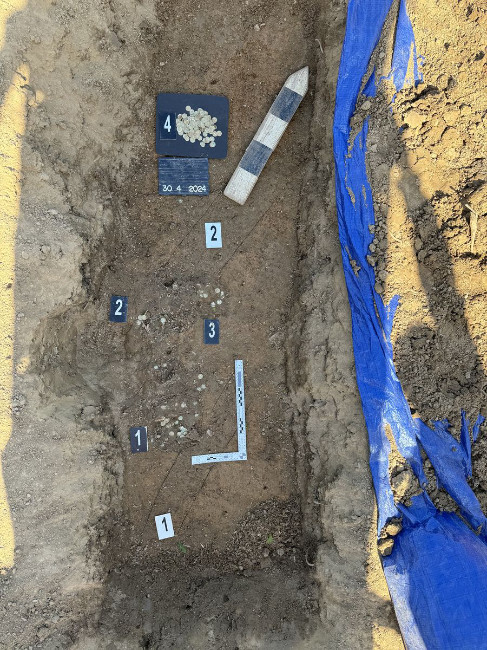
The place where the silver coin hoard was found. Some coins had come to the surface, others were still buried deep in the soil. Photo: Institute of Archaeology of the Czech Academy of Sciences in Prague.
A Million-Dollar Jackpot
“Unfortunately, we do not have much information about the purchasing power of the coins in the period around 1100. But it certainly was a colossal amount of money, and impossible to amass for a simple farmer. Today we would compare it to a million-dollar jackpot,” explains Filip Velímský.
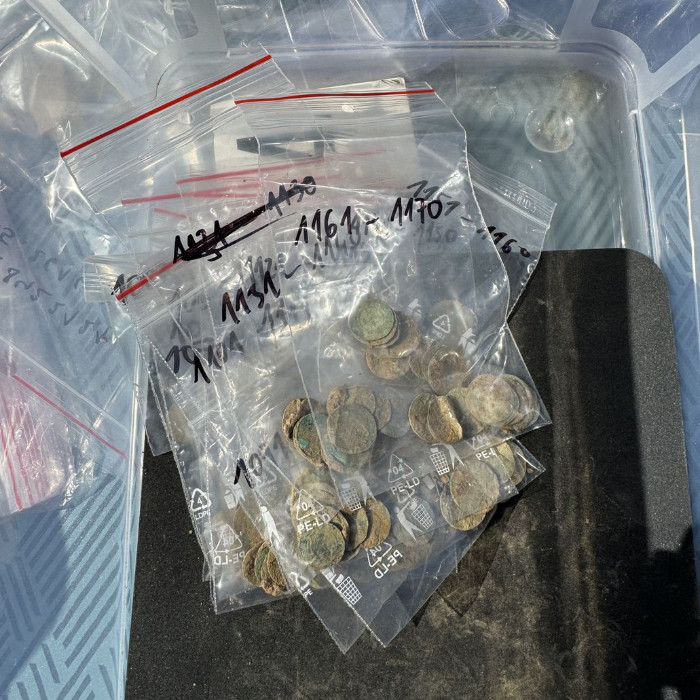
First attempts at sorting the coins. Photo: Institute of Archaeology of the Czech Academy of Sciences in Prague.
Document, Clean, Photograph, Conserve
The denarii hoard is now examined by experts of the Institute of Archaeology of the Czech Academy of Sciences in Prague and the Czech Museum of Silver in Kutná Hora. It is currently planned to present the coins to the public in the summer of 2025.
Until then, employees of the institutions have a lot of work to do. “The museum employees will record the entire find and add it to the collection, clean every single coin and restore them if necessary, photograph them for publications and advertising purposes, identify them according to numismatic standards and create a detailed catalogue,” explains Lenka Mazačová.
Moreover, the denarii will be examined by means of photographs and x-ray imaging as well as spectral analysis to determine the metal composition. The goal is to exhibit the treasure in the coin exhibition of the museum in Kutná Hora, making this extraordinary find accessible to the general public.







